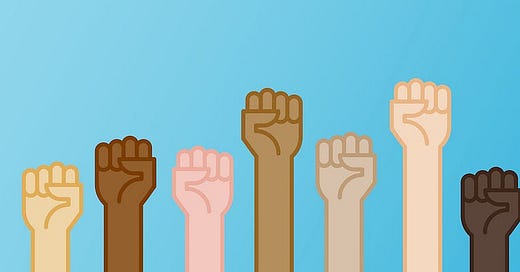006 — An idea 💡
I write this on July 19th, almost 5months since my work environment shifted from my office to my home. It’s been an adjustment, but a mild…
I write this on July 19th, almost 5months since my work environment shifted from my office to my home. It’s been an adjustment, but a mild one compared to the devastating economic impact the pandemic has had on hourly workers. Workers that are mostly employed by the hospitality, retail, and airline industries.
60% of Americans can’t cover an unexpected expense of $1,000. One missed paycheck can make or break someone’s month or year. Couple that with the predatory practices of our consumer financial institutions, and you can begin to fathom the pain some of our most hard working citizens are experiencing now and will continue to experience for years to come.
This got me thinking of how I can have broader impact outside of individual donations and support. A way to truly help out those who fall on hard times. This got me thinking of an idea for a business. It’s just an idea and it’s not thoroughly researched, but it’s something I will attempt to nurture over the coming weeks and months.
The problem
At a high level, the problem is twofold:
One — As mentioned above, the majority of US workers are hourly workers that can not cover an unexpected expense of $1,000. They live paycheck-to-paycheck. They do the best they can, with the abilities the skills and abilities they posses. They do honest hard work, but because of the law of numbers these people are victims of the Pareto distribution.
Two — It’s been historically difficult for underserved segments of our population to climb out of financial holes. Our financial institutions simply do not cater to these segments. It is extremely hard for people to access capital in a pinch without being indebted for the rest of their lives. Instead of giving humans a chance, companies institute predatory practices such as overdraft fees and high credit card interest rates.
My unrefined solution — Spoiler it doesn’t solve it all
A two sided charitable marketplace that encourages casual philanthropy coupled with earning opportunities for those in need.
For earners — Users create quick profiles, specify where they reside, and what they and their families are in most need of. With this information, we can connect people with donors and financial instruments that will allow people to access capital at reasonable fees. Users can also access earning opportunities in their community or globally. Users can load earnings onto debit cards for immediate spend.
For donors— A platform that enables casual philanthropy where people or corporations can sponsor families in their community and uplift others. Modern financial companies can also access a user base that is hungry for better tools that will serve them in a way traditional banking can not. Lastly, companies and individuals can post earning opportunities for people in need.
This is just the tip of the iceberg. The possibilities are endless if the proper growth occurs. There is even a possibility to offer up loans based on risk profiles. I could bundle the risk and sell the loans to institutions willing to back these debt instruments.
A quick use case
Diana is a single mom with two children from Sioux Falls, South Dakota . She is in need of extra capital to fund her kids extra curricular activities. Timothy has after school piano classes, and Shelly takes ballet. Diana is also able to work more hours as a paralegal if her kids are occupied after school. She hears about us via a facebook ad and decides to sign up. She finishes onboarding and is now signed up as an earner.
Parth is an engineer at Google. He’s been there for 10 years and hears about us from a few colleagues that are active on the platform. His colleagues show him how much impact they have had in their community and Parth really takes interest. He signs up to be a donor later that night. Parth browses some earner profiles from his home town of Sioux Falls, and notices Diana. He takes to her story because he too struggled raising children while going to a coding bootcamp. He decides to make a recurring donation and contribute funds to Diana’s cause.
Diana is informed that she has received a new contribution. She opens the app and notices that Parth is contributing $50/month. She’s very happy and taps “thanks”. Parth receives the thank you notification and feels extremely happy that he was able to help a family in need. At the end of the year Parth receives a form 8283 with all his charitable contributions. He uses it to take some deductions for his end of year tax return.
What’s next?
I don’t know, but I suspect mostly research. I’d love to eventually build something like this. I’d also be willing to participate in funding for a startup already that is already building something like this.




